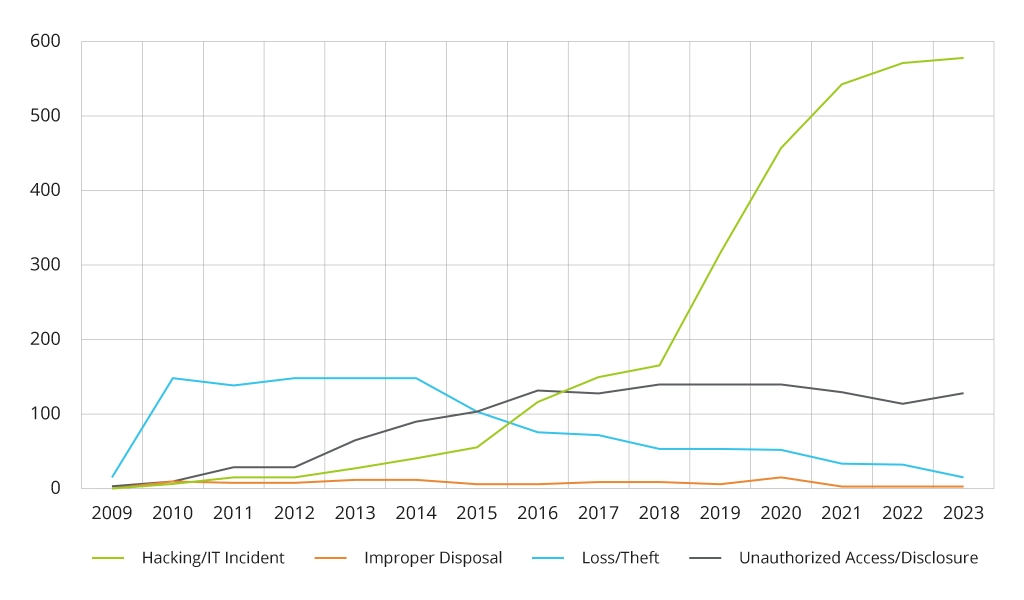How to Approach Intelligent Automation Implementation in Healthcare
What Is Intelligent Automation?
Intelligent automation is the strategic application of technologies like artificial intelligence (AI), business process management (BPM), and robotic process automation (RPA) to streamline and enhance decision-making. For example, a healthcare company may use intelligent automation to drastically reduce costs by identifying repetitive operations and automating various workflows such as patient journeys and administration.
This powerful trio works in unison, though each technology can be implemented independently for point improvements.
RPA: these simple but tireless robots excel at optimizing repetitive, rule-based back-office tasks. RPA bots can automate the extraction of data from various sources like patient charts, lab reports, and insurance forms, then use that data to handle calendar availability checks, patient reminders, and confirmation emails.
Case in point: Icelandic healthcare leader HSN partnered with Infopulse to build a scalable RPA solution using Microsoft Power Automate. It automates HR and financial tasks (reports and data entry), uses AI for form recognition, and acts as a "marketplace" of pre-built workflows for other Icelandic hospitals.
AI: this technology is truly smart and goes beyond simple automation. Machine learning algorithms allow AI to analyze vast amounts of data, both structured (medical records) and unstructured (research papers), extracting hidden patterns and making predictions that were once unimaginable. The range of its applications extends from AI-powered assistants to predictive analytics, medical imaging analysis, drug discovery, and more.
BPM acts like a business analyst, taking a systematic look at how things get done. By identifying bottlenecks, inconsistencies, and areas for improvement, Business Process Management helps medical institutions streamline processes. In healthcare, this translates to mapping out the entire patient journey, from referral to discharge, or analyzing the flow of medical supplies.
By combining the strengths of RPA, AI, and BPM, organizations are bringing the patient-centered and cost-effective future to reality. Easier said than done. Let's explore the vast potential within healthcare data – that proverbial "sea of unused information" – and see how savvy providers are already leveraging it with intelligent automation.
Use Cases of Smart Automation in Action
The healthcare industry is facing a data deluge. 97% of hospital data remains unused, according to the World Economic Forum, translating to over 50 petabytes of siloed data produced annually. This presents a massive opportunity for intelligent automation to unlock its potential. More effective integration of data and analytics across the care delivery value chain can empower medical professionals and care providers with insights that can contribute to both administrative and patient-facing processes.
Administrative Tasks
- Appointment scheduling and management: Intelligent chatbots with the Natural Language Processing (NLP) core can handle appointment scheduling, confirmation, and rescheduling, reducing wait times and administrative overhead. By enabling patients to interact with the chatbot, administrators are freed from these repetitive tasks, which optimizes hectic clinic workflow.
- Revenue cycle management: Intelligent automation can streamline the entire revenue cycle, from patient registration to billing and collections. A smart RPA bot can automatically pull patient information from registration forms, verifying insurance coverage, and submitting claims electronically.
- Data entry and management: By automating data entry from various sources (charts, forms, scans), smart data capture ensures accuracy and reduces the burden of searching for necessary information on healthcare workers. Optical Character Recognition (OCR) can convert scanned text into a machine-readable format, eliminating the need for manual data input and reducing errors.
Case in point: A simple task of data management can be augmented with data analytics, leading to significant improvements in workflow and patient outcomes. A great example is Alder Hey Children's Hospital. They partnered with Microsoft to dissect immense amounts of patient data with an AI algorithm that predicts bed space utilization. By analyzing historical data on patient severity levels, admission numbers, and discharge patterns, the algorithm is able to forecast bed needs. These intelligent insights improved resource planning and patient flow that translated into better care.
Patient Care
- Virtual care support: Chatbots can answer patient questions and schedule appointments, reducing call center workload and wait times. NLP allows chatbots to understand patient questions and requests phrased in natural language. Imagine a patient typing, "I have a sore throat. Can I set up an appointment?" The chatbot can understand the intent and guide the patient to book a meeting with the appropriate healthcare professional. For functionalities like arranging a session, chatbots can integrate with the healthcare provider's electronic health record system. This is particularly critical as the EY Global Consumer Health Survey 2023 revealed concerning patient experiences. Consumers across six surveyed countries rated access to care below average (42%). Intelligent automation can bridge this gap by making it easier and less frustrating for patients to navigate the healthcare system. Clear communication from chatbots can also ease wait time frustration, while routing patients to the most appropriate sites ensures they receive timely and efficient care.
- Patient education and support: Machine Learning algorithms analyze patient data and medical history to personalize educational materials and support programs. For example, a diabetic patient can receive tailored information about blood sugar control based on their specific needs and data. Similar to how clinical decision support systems (CDSS) analyze patient data in real-time to suggest the most appropriate treatment options, recommendation engines can suggest personalized content and programs based on the patient's diagnosis and health goals.
As you can see, smart automation is potent at simplifying and standardizing endless mazes of data. But where do you begin your modernization journey?
Things to Consider when Implementing Intelligent Automation
Sensitive Information and Data Protection
Effective patient data management is crucial for quality care, but balancing security, privacy, and regulations can be rather complex. This challenge is emphasized by the recent surge in healthcare data breaches. In 2023, a record high of 725 incidents exposed over 133 million patient records. Hacking has become the dominant cause, accounting for nearly 80% of breaches, a significant shift from the more common physical loss or theft of data in the past.
In response to this growing threat, intelligent automation offers a potent solution. A fresh research article in the Journal of Cybersecurity and Information Management proposes an AI-enabled framework that unifies information security and information management for improved healthcare functionality. This framework could potentially help healthcare organizations better defend against cyberattacks and protect sensitive patient data by integrating cognitive automation into their security strategies.
Process Mapping and Data Analysis
Identifying perfect tasks for automation is a serious project in itself. Process mapping, which visually represents workflows, helps pinpoint repetitive tasks and bottlenecks that automation can streamline. Data analysis tools like Business Intelligence dashboards (Microsoft Power BI is great for this) can reveal high-error rate processes or those with long turnaround times, for example:
- Repetitive and rule-based tasks: Think data entry, appointment scheduling, or insurance claims – clear, defined steps that automation excels at.
- Error-prone processes: Handwritten notes, medication calculations – automation minimizes human error by capturing information through OCR.
- High-volume processes: Lab test ordering, discharge summaries, equipment inventory, or managing outstanding payments – automation refines these frequently performed tasks.
Cost of Implementation
Beyond the initial excitement of intelligent automation, cost calculation can be a hurdle for many organizations. Allocating budget for this type of digital transformation can feel like navigating through fog, as the cost varies depending on several factors:
- Technology Stack: The specific software tools and platforms of your choice will significantly impact the cost. Cloud-based solutions like Microsoft Power Automate might be more cost-effective than on-premises solutions for certain scenarios.
- Complexity of Automation: Simple automation projects require less development effort and incur lower costs. Complex tasks involving AI or machine learning models will be more expensive to implement.
- Scalability Needs: Consider if your automation needs will grow in the future. A scalable solution might call for an initial investment but can save costs in the long run.
At Infopulse, we skip the one-size-fits-all approach to automation and know exactly what combination of tools you will need for your specific business requirement. Our experts work with you to design a custom RPA or AI solution or blend them with extra tech where needed.
Conclusion
Use cases for intelligent automation in healthcare are plentiful. Tools, platforms, technologies, and experts for its implementation are in abundance too. The next step is yours.
Start by identifying repetitive tasks like data entry, scheduling, or claims processing. Then, explore intelligent automation tools like RPA for automating these tasks, freeing up staff and reducing errors. AI can analyze patient data to predict issues and personalize care, while BPM helps optimize workflows.
![Intelligent Automation in Healthcare [banner]](https://www.infopulse.com/uploads/media/banner-1920x528-how-to-approach-intelligent-automation-implementation-in-healthcare.webp)



![Level of Automation Maturity [thumbnail]](/uploads/media/thumbnail-280x222-catching-up-with-hyperatomation-how-to-define-automation-maturity.webp)
![Hyperautomation use cases [thumbnail]](/uploads/media/thumbnail-280x222-top-hyperautomation-use-cases-and-examples.webp)
![Developing Healthcare Software [thumbnail]](/uploads/media/thumbnail-280x222-what-to-expect-when-developing-digital-health-solutions.webp)
![Robotic Invoice Process Automation [thumbnail]](/uploads/media/automating-invoicing-with-rpa-280x222.webp)
![RPA vs Intelligent Automation vs Hyperautomation [thumbnail]](/uploads/media/how-to-move-from-rpa-to-intelligent-automation-or-hyperautomation-280x222.webp)
![Cross-Industry RPA Benefits [thumbnail]](/uploads/media/cross-industry-benefits-of-robotic-process-automation-rpa-280x222_v2.webp)
